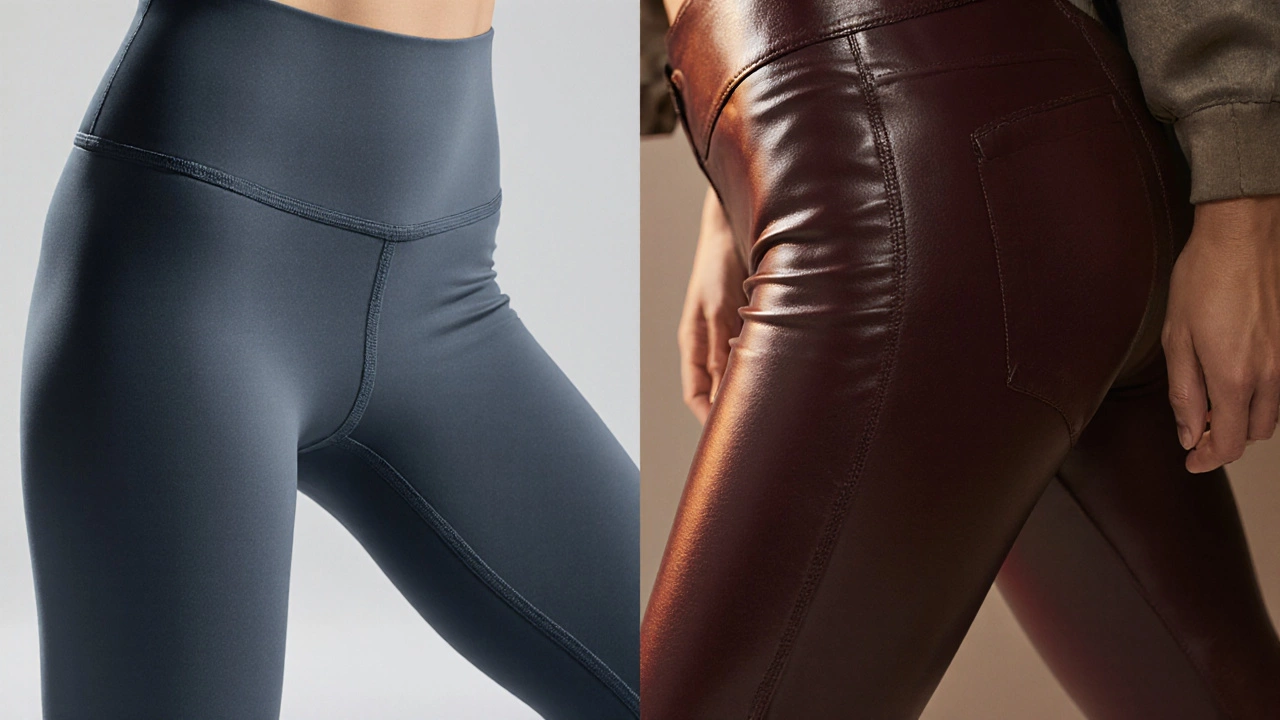Yoga Pants vs Leggings: What’s the Real Difference?
When comparing Yoga Pants vs Leggings, the two most popular lower‑body garments for active and casual wear. Also known as yoga leggings debate, it helps shoppers decide based on fit, function and style.
First, let’s look at Leggings, tight, stretchy tubes of fabric that originated in dance and gym wear. Leggings usually feature a high percentage of synthetic fibers like polyester or nylon, which give them a glossy finish and a second‑skin feel. Their main goal is to hug the body, so they excel at showing off shape but can feel restrictive during deep stretches. Leggings have become a staple in everyday casual outfits because they pair easily with oversized tees, jackets or boots.
Next up is Yoga Pants, soft, usually higher‑waisted trousers designed for flexibility and comfort during yoga practice. Unlike typical leggings, yoga pants often blend cotton, spandex and bamboo to create a breathable, moisture‑wicking wall that moves with the body. The waistband is engineered to stay in place without digging in, which reduces distractions during inversions. Because of this construction, yoga pants are also a go‑to for low‑impact workouts, lounging at home or running errands.
Both garments sit under the broader umbrella of Sportswear, clothing designed for physical activity that balances performance, comfort and style. Sportswear influences legging design by pushing manufacturers to add sweat‑management technologies, while it drives yoga pants toward softer, more sustainable fabrics. In turn, the rise of Athleisure, a fashion trend that blends athletic wear with everyday style blurs the line between the two, making both suitable for office‑casual looks when paired with smart blazers or tailored coats.
Fabric choice is a key attribute that separates the two. Performance Fabric, technical textiles that manage moisture, regulate temperature and resist odor is often embedded in yoga pants to support intense sessions, whereas leggings may prioritize compression and shape‑enhancement. This difference means yoga pants usually claim higher breathability scores, while leggings brag about a tighter fit that can accentuate muscle tone.
Beyond material, fit and cut also matter. Yoga pants typically feature a relaxed thigh and a slightly tapered ankle, giving a smoother silhouette for seated poses. Leggings, on the other hand, often have a uniform width from hip to ankle, which can create a more streamlined look but may ride up during wide‑leg movements. Understanding these variations helps you match the garment to the activity: choose yoga pants for flexibility‑heavy workouts, and opt for leggings when you want a sleek, fashion‑forward vibe.
Price ranges reflect the technology packed inside each piece. Basic leggings can start as low as £10, while premium performance yoga pants from niche brands may exceed £80. Consumers should weigh durability, brand reputation and the specific features they need. A good rule of thumb is to test the stretch, check the seam reinforcement, and see how the waistband feels on the skin before committing.
Now that we’ve broken down fit, fabric, function and fashion, you have a clearer picture of which option fits your lifestyle. Below you’ll find a curated collection of articles that dive deeper into washing tips for active wear, the evolution of sportswear terminology, and how to style your favorite pieces for every occasion. Whether you’re a yogi, a gym enthusiast, or just love the comfort of stretchy bottoms, the posts ahead will give you practical insights to make the right choice.
- Cleo Fairchild
- Oct, 22 2025
- 0 Comments
Leggings vs Activewear: Are Leggings Considered Activewear?
Discover whether leggings count as activewear, learn the key fabric features, and get tips for choosing the right pair for workouts or casual wear.
